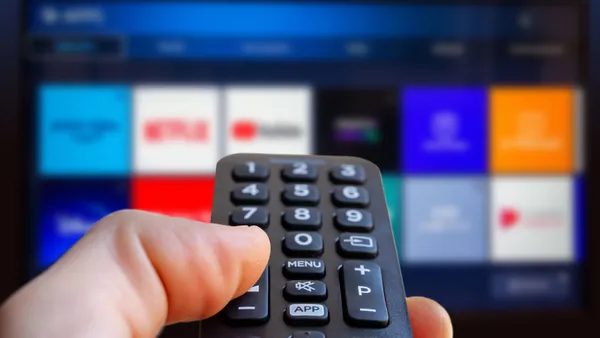Augmented reality is no longer the new kid on the block and not simply a nice to have. AR is a powerful tool, that when incorporated into your marketing strategy can help to drive sales, increase engagement and maximize budgets. From tracking consumer behavior to creating deeper emotional connections, we have identified 6 opportunities AR presents that will help take your 2022 strategy to the next level.
These are:
- The death of the cookie
- Championing sustainability
- Contactless retail
- Enhancing ABM with Augmented Reality
- Personalization at scale
- Leveraging the mobile web
1. The death of the cookie
With Google's planned cull of third-party cookies just around the corner and browsers like Safari and Firefox already restricting cookies by default, advertisers and publishers must re-think and build their strategies around a cookieless diet, and marketers should be looking at AR to provide the sustenance they need to deliver better, more impactful marketing in 2022.
Outside of the walled gardens of Meta, Google and Snap, AR can leverage the first-party data from a brand or partner to deliver a truly personalized experience to the end-user in multiple different ad formats. What's even more compelling is that in a recent AdWeek report 70% of consumers agree that they're more likely to interact with AR-based advertising than traditional digital ads. As the spatial landscape evolves and privacy remains front and centee, AR can be the key component for marketers and advertisers to build their 2022 strategies around.
2. Championing sustainability
It's now more important than ever for brands to navigate an expanded definition of relevance and trust — in a recent Clear Channel and JCDecaux study, two-thirds of consumers stated that they don’t trust brands and 61% stated they want greater transparency.
And with climate change and the environmental impact of consumerism firmly on the agenda, AR provides marketers with the perfect opportunity to not only communicate sustainability messaging but for brands to bridge the divide between brand purpose and consumer trust.
66% of millennials are prepared to spend more on sustainable products - but a brand's sustainability information is often hard to find and requires a lot of research - time which many consumers cannot afford. (Nielsen 2015)
With AR, brands can turn products, packaging and places into digital discovery channels, surfacing their sustainability efforts through a humble QR code or a simple URL within their digital comms.
3. Contactless retail
Augmented Reality and QR code technologies are playing a huge part in contactless retail - low-to-no-touch shopping experiences.
Whilst things like mobile wallets and tap-to-pay enabled chip cards are hallmarks of the contactless retail category, there is a huge and (rapidly) growing opportunity for brands to use QRs as a frictionless gateway to additional content, elevating the in-store consumer experience and not just the transaction itself.
At the retail aisle, where brands are constantly vying for attention, QRs offer an additional point of differentiation for consumers who are still actively considering which product to buy in a given category — we call this the 'at shelf tie-breaker.'
We're seeing more and more QR codes appear on packs to help support this and once the access point to transport a consumer from the physical to digital is there, it comes down to content. This is where AR takes center stage to help marketers engage the consumer and tell brand stories in a way that no other channel can.
4. Enhancing ABM with Augmented Reality
Rightly or wrongly, ABM (Account-Based Marketing) has become the go-to strategy for many Enterprise-lead B2B brands. Investment soared in ABM in 2021, with 70% of marketers reporting using ABM (up 15% from 2020) to generate awareness, engage their target accounts and ultimately elicit a response.
But with increased spending comes more pressure to drive business results — and in 2022 marketers should be utilizing AR to make their ABM campaigns work harder. Simply put, AR can drive more engagement across a multitude of channels, as well as greater personalization, unifying the physical (direct mail, events) and digital channels (display, blog content, email) to tailor more immersive experiences to prospects.
AR can make both physical and digital components of ABM more impactful. For example, email campaigns that link through to personalized face filters or wearable branded merch can make all the difference when it comes to generating attention and click through.
With AR triggered from a QR code, URL or embedded directly on-site, this cost-effective engaging solution is one marketers should give some serious thought to in 2022.
5. Personalization at scale
Personalization has always been (and will be) an important part of customer-centric marketing, and in 2021, this more often than not happens on a user's mobile device, yet mobile experiences are still lacking that something special. Personalization pays too, research by PwC found that shoppers are willing to pay up to 16% more for personalized experiences and with AR as part of the marketing mix, marketers can drive more contextually relevant experiences and personalization at scale.
Think product packaging that's interactive and personalized to the buyer at the point of purchase or a product unboxing experience where the company CEO introduces and demos the product on the countertop in front of the consumer in 3D.
The need for greater personalization is only going to increase and marketers can get ahead with using AR to drive personalization at scale, across the complete customer journey.
6. Leveraging the mobile web
Mobile traffic grew to 55% of all global web traffic in 2021, and in 2022 that trend is set to continue. Marketers need no convincing when prioritizing their websites for the mobile occasion, however, in the experience economy buyers are looking for more. According to a Forrester report, 61% of US adults say that they are unlikely to return to a website that does not provide a satisfactory experience, regardless of how good a product is.
WebAR provides an unmatched opportunity for marketers to surprise, delight and educate their website visitors in 2022. Take product visualization for example, marketers can enable their site visitors to quickly view and visualize their products in their intended environment at a tap of a button.
Savvy brands are already doing this to great effect.
Shopify recently stated that interactions with products that have 3D/AR included showed a 94% higher conversion rate, than products without. These stats are both mind-blowing but also show the huge untapped potential for marketers to leverage WebAR to drive more engagement and increase conversions.
So the stage is set for brands to take advantage of the tech and start incorporating WebAR into their mobile sites. If mobile was the second phase of the web, then WebAR is the third, it's now over to you marketers to start thinking about your websites differently and offering your visitors a better, more immersive experience in 2022.
So whether it's taking advantage of the mobile web, communicating your sustainability efforts or taking your ABM campaigns to the next level, AR holds the key in 2022.










